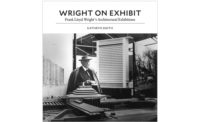Exclusive: a tour inside a Frank Lloyd Wright house in the Southwest reveals the power of the original interiors, never before published.
I visited the Fir Tree House only once, in 1950. An apprentice to Frank Lloyd Wright, I was on my way from Taliesin in Wisconsin to Taliesin West in Scottsdale, Arizona, with another apprentice, John deKoven Hill, who had supervised the stonework for the house. Wright had finished it in 1948 for a family who wanted a vacation home with four bedrooms, three baths, and a separate servant's room and bath in a remote valley in the Southwest. Also required was a service wing for the laundry, a water-pumping facility, and a stable—all for an original budget of $10,000, which was eventually exceeded.
While the owners were very private, they welcomed us on that chilly October morning before they returned to their home in the Northeast. We were driving a sporty but elegant Lincoln Continental cabriolet'redesigned by Wright'and when we arrived we found a fire burning in the great living room's fireplace. The soaring space was phenomenal, the furniture specially designed by Wright was outstanding, and with the smell of smoke we felt we were in a great baronial hall looking out onto a wild, untainted landscape. The house sits on a gentle sloping meadow running down to a river, with a mountain, studded with fir trees, rising on the other side.
The mountains, the river, and abundant firs must have brought to Wright's mind his project conceived in 1923, the never-realized Lake Tahoe Summer Colony in Emerald Bay, California. Whereas the teepee roof of the hillside cabin for the earlier project rose over a square plan, in the Fir Tree House he elongated the roof for the living room. The owner also wanted the living room and master bedroom to face north to take in the splendid view of the mountain.
Wright's design called for combining stone walls with rough-sawn pine boards and cedar shakes. He had developed a construction technique for the walls at Taliesin West, which was built in 1938: although the Arizona desert was strewn with stones, they could not be dressed or cut in the manner of most normal stonework. So Wright placed the flat surfaces of the rocks in a wood form, poured the concrete around them, then removed the form to reveal a mosaic surface of stones in different sizes and colors. In the Fir Tree House, however, the stonework posed a problem, since the contractor was unfamiliar with this type of masonry. So Wright sent for John deKoven Hill, who worked on the project from the start. The result was very successful. With its grandly rustic architectural elegance, the Fir Tree House stands alone in Wright's oeuvre.
People |
Products |
















Post a comment to this article
Report Abusive Comment